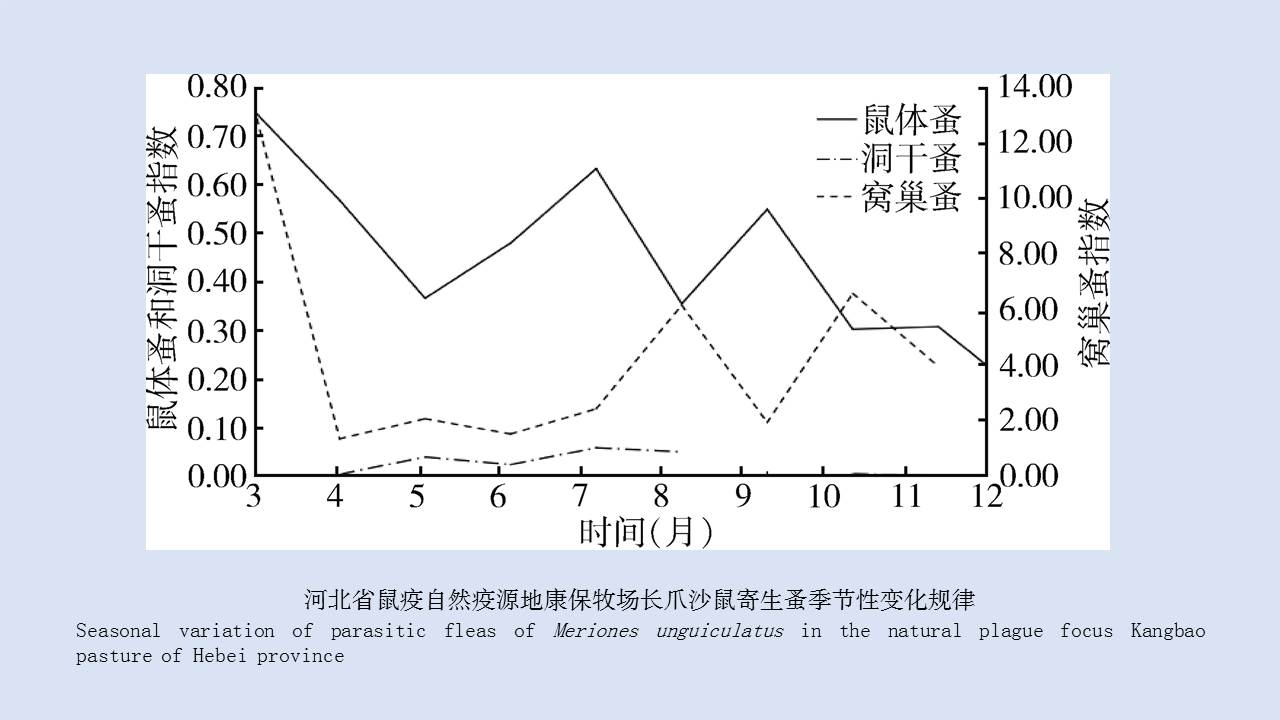 PDF(651 KB)
PDF(651 KB)


河北省鼠疫自然疫源地康保牧场长爪沙鼠寄生蚤动态分析
康东梅, 闫东, 候芝林, 任兴宇, 牛艳芬, 兰晓宇, 刘冠纯, 杜国义, 陈永明, 刘晓林, 张锐, 马洁琼
中国媒介生物学及控制杂志 ›› 2022, Vol. 33 ›› Issue (1) : 72-75.
 PDF(651 KB)
PDF(651 KB)
 PDF(651 KB)
PDF(651 KB)
河北省鼠疫自然疫源地康保牧场长爪沙鼠寄生蚤动态分析
 ({{custom_author.role_cn}}), {{javascript:window.custom_author_cn_index++;}}
({{custom_author.role_cn}}), {{javascript:window.custom_author_cn_index++;}}Dynamic analysis of parasitic fleas of Meriones unguiculatus in natural plague focus Kangbao pasture in Hebei province, China
 ({{custom_author.role_en}}), {{javascript:window.custom_author_en_index++;}}
({{custom_author.role_en}}), {{javascript:window.custom_author_en_index++;}}
| {{custom_ref.label}} |
{{custom_citation.content}}
{{custom_citation.annotation}}
|
/
| 〈 |
|
〉 |